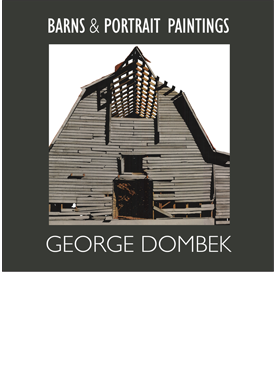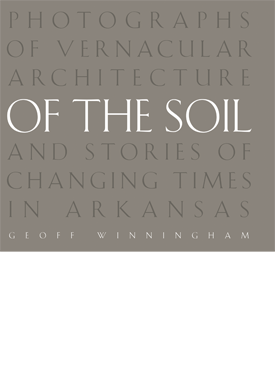Arkansas artist George Dombek’s fascination with barns began in 1970s Florida, where he captured the geometry of sun and shadow on deteriorating tobacco barns, and he has returned to the subject often in the decades since. For this most recent series, Dombek spent three years covering almost fifty thousand square miles. The barns he found were perhaps unremarkable in themselves—they are, after all, ubiquitous and utilitarian objects—but Dombek’s interpretations reveal an intricacy of character that’s no less diverse than that of human portraiture.
Dombek, who is trained as an architect, uses his watercolors to build up shadows and textures over geometric compositions in a style he calls “Constructed Realism.” To his technical virtuosity he adds humor, pathos, dignity, and reverence as well, creating no less than a visual eulogy to these buildings and their rusting contents.
George Dombek has taught architecture and art at universities in Arkansas, Ohio, Florida, Saudi Arabia, and Italy. His work has been included in over eight hundred museum, corporate, and private collections and exhibited in more than 150 shows. George Dombek’s website.
Henry Adams is professor of American art at Case Western Reserve University. He is the author of more than a dozen books.
Laura M. Terry is professor of architecture at the Fay Jones School of Architecture at the University of Arkansas. She is also a painter and has exhibited her work in Savannah, Atlanta, Minneapolis, Los Angeles, and New York.
Louis A. Zona was born and raised in New Castle, Pennsylvania, and attended Youngstown State University, the University of Pittsburgh, and Carnegie Mellon University, from which he received a doctorate in 1973. He joined the Youngstown State faculty in 1971 and became the executive director of the Butler Institute of American Art in 1981. Louis Zona writes extensively on contemporary American art and lectures throughout the United States.
“There’s a certain irony, no doubt, that a ‘modern’ painter should devote such loving attention to an artifact of the past. But if the central fact of modern life is change, then surely these collapsing structures provide an important marker of the changes that society is going through today, as age-old ways of doing things slip into oblivion.”
—Henry Adams

Begun in 2008, the collaborative publications venture between the Fay Jones School of Architecture and Design and the University of Arkansas Press pursues projects that document and celebrate creative achievements in various forms of environmental design, design preservation, and design history. Projects tied to Arkansas are especially, but not exclusively, sought. The inaugural publication, a magisterial documentary DVD on the life and practice of Fay Jones, exemplifies our ambitions both in terms of subject and quality.





